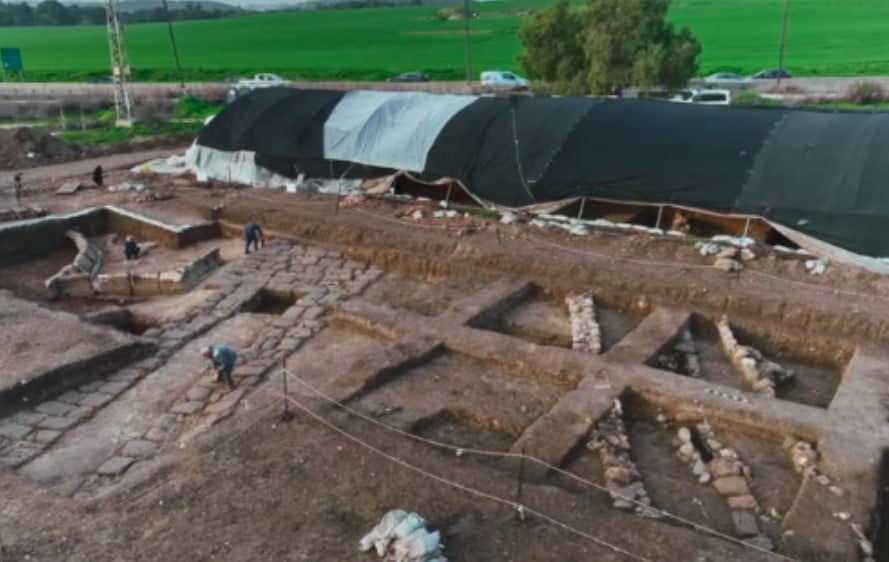The Roman base served 5,000 soldiers for 180 years.
By Pesach Benson, TPS
Archaeologists uncovered the remains of an ancient Roman legionary base in northern Israel dating back 1,800 years, the Israel Antiquities Authority announced on Wednesday.
The excavation, at the foot of Tel Megiddo, reveals insights into the military presence and infrastructure of the Roman VIth ‘Ferrata’ Iron Legion, the Antiquities Authority said.
Tel Megiddo, also known simply as Megiddo, occupies a strategic position overlooking the Jezreel Valley, a key crossroads of ancient trade routes connecting Egypt and Mesopotamia. Its history spans thousands of years, making Tel Megiddo one of the most extensively excavated sites in the region.
Among the discoveries are sections of the Via Pretoria, the camp’s main road, as well as a semicircular-shaped podium and stone-paved areas that formed part of a large public building. According to the Antiquities Authority, the sheer scale of the legionary base — measuring 550 meters long and 350 meters wide — makes it a unique find in the region.
“The unique contribution of the results of this research project lies in the rarity of such archaeological discoveries. While Roman military camps are known in Israel, they are temporary siege camps, or small camps belonging to auxiliary divisions. None compares with the entire complex of the legionary base, as has been uncovered in the archaeological excavations at Legio, next to the Megiddo Junction,” said excavation director Dr. Yotam Tepper.
“The Roman Legion camp at Legio served as a permanent military base for over 5,000 soldiers for more than 180 years. It was a strategic hub from which distances along the Roman Imperial roads to major cities in the north were measured and marked,” he added.
The excavation has also yielded artifacts such as coins, weapons parts, pottery sherds, and glass fragments, along with a vast quantity of stamped roof tiles used for various construction purposes.
Preliminary surveys of the camp area using ground-penetrating radar indicated that the entire base was underneath the wheat fields of Kibbutz Megiddo.
Tel Megiddo, which has been inhabited continuously for over 5,000 years, is mentioned several times in the Bible. Christian texts often refer to the site as “Armageddon.” Today it is a national park designated by the United Nations Educational, Scientific and Cultural Organization (UNESCO) as a World Heritage Site.
Eli Eskosido, director of the Antiquities Authority said, “The proximity of the Roman legionary base to the National Park of Megiddo, recognized as a World Heritage Site, and also to one of the earliest Christian prayer halls known in the world, discovered by the Israel Antiquities Authority within the Megiddo Prison compound, provide potential to enhance the tourist experience at this central location at the gateway into the Galilee.”
